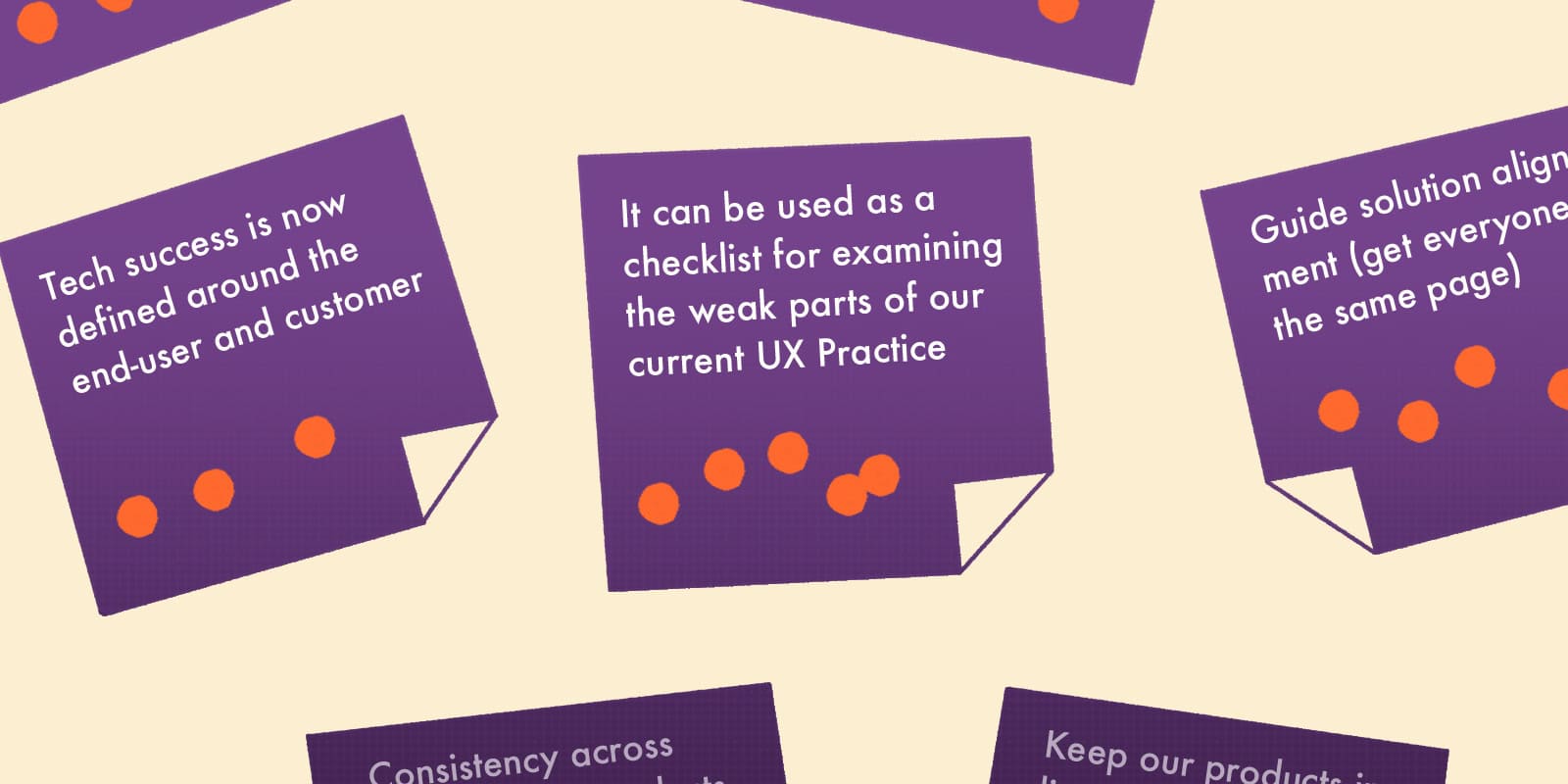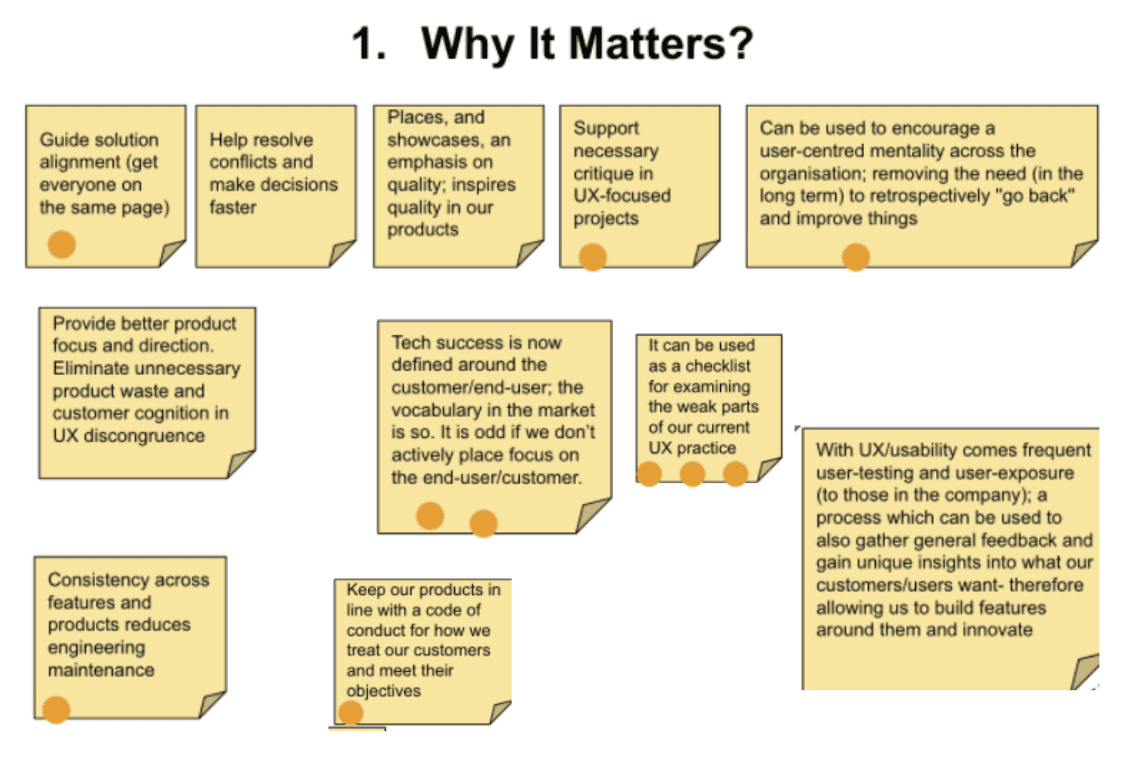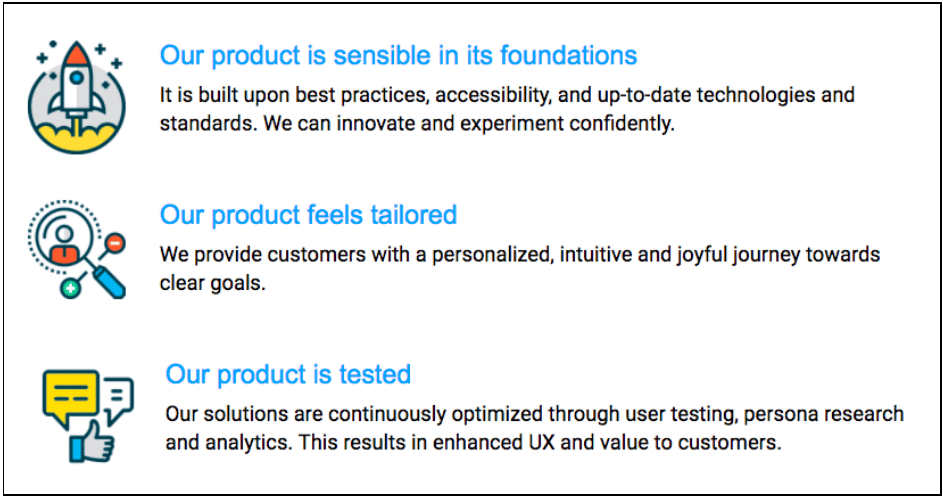Today, we want to tell you a simple story. A story about how UX evolves at Bloomreach, why we decided to make these principles, and why UX and usability are so important to our future.
This is a full-hearted note from the Global UX team at Bloomreach; consisting of Albert Wang, Anthony Nguyen, Carolien de Kort and Kathryn Moore.
Human Meets Machine. CMS Meets Intelligence
If you have ever worked in the Ecommerce space, with a focus on site merchandising or SEO, you have probably heard of Bloomreach. Historically we are the leading company for using advanced ranking algorithms for optimizing ranked items, such as product ranking for category pages and search results, and also for generating SEO-savvy landing pages and smart internal links, fuelled by AI.
Although the utilization of AI has yielded significant results in these experiences, the downside of adopting only the black box algorithm is that the machine can’t know everything. It knows user behavior from pixel data collection, it knows the structure of data and it knows the metrics of products.
However, it does not know about brand subjectivity, unique merchandiser insights, nor resulting campaigns and all of the reasons behind them. This is why in the past two years Bloomreach has been investing time and effort into expanding and improving our tooling; specifically the operations & analytics UI dashboard for merchandising.
Any site merchandiser, with or without a data/analytics background, can access comprehensive insights on how their site is performing, and look for opportunities to optimize, and adjust, the ranking results generated by AI.
AI optimizes your site experience on a massive scale, and human curation fills in the gap of AI’s shortcoming. The combination system of human & machine eventually outperforms the AI-only or human-only systems.
However, building a system like this poses a complex but utterly fascinating challenge for UX design. It’s like building tools for the technicians who tune the robotic hosts in Westworld.
Each host is unique, requires constant monitoring, and optimization, to make them more than basic robots; to make them magical. Note: if you haven’t seen Westworld we apologize for the nerdy reference. But hey, it’s an awesome sci-fi show =)
In parallel with the UX challenges posed by Bloomreach merchandising solutions, in November 2016 Bloomreach acquired Hippo, a leading player in the CMS world; the enterprise CMS is now known as ‘Bloomreach Experience’.
Hippo has the reputation of being the best Java based CMS for enterprise organizations, with a strong focus on the open source and developer community. The merging of these two companies, and their collective
Ecommerce and content management superpowers, has resulted in a new landscape of endless possibilities and new opportunities. Imagine one system in which you can craft any piece of content, any campaign and any experience, with built-in AI to optimize your site non-stop and around the clock. Plus you can plug-in any existing data and tools you are already using for your business. This vision, the idea of this single system, is aligned with the vision of the DXP: the ‘Digital Experience Platform’, an idea evangelized by Gartner that holds the promise of upgrading the internet to be the true semantic web.
With all the complexity of executing on this bigger vision, continuing to improve all existing solutions, and multiple product and engineering teams working across different time zones and cultures, it became strikingly obvious to us that we needed something to center us.
We needed to create something which we could align on; something that would keep us together and something which would introduce some level of commonality in our products, values, and processes. This need, born from a new vision, new opportunities, and new challenges, prompted the UX team in Bloomreach to define a set of UX principles.
Crafting the Principles
From the start we envisioned them as resembling a set of company values or manifesto, something which could frame how we designed our solutions, something to which we could hold ourselves accountable; a shared benchmark of ‘UX quality’.
They could neither be too high-level nor too low level. Something such as ‘Our UI must look streamlined’ is simply too subjective, fluffy and immeasurable. However, something such as ‘All buttons must be right-aligned’ is too low level and leaves little room for necessary design flexibility in and across the various Bloomreach products, plus it is too ‘design’ related and is something that should probably go in a style guide.
Our principles were about more than design- we knew this from the beginning. Afterall, achieving good UX is about much more than design.
It’s about the technology that is used, development methods applied, product management practices, knowing your users, testing sessions, data, speed of delivery, community engagement and so on. Of course, achieving good user experience is also, critically, about the experience.
How do users feel when they use a product? What are they thinking as they attempt to accomplish a task? What irritates them? What feels like it is taking too long? What questions pop up in their head as they are clicking a button? What helps them in keeping their focus, and what distracts them?
All of the above, everything that ‘UX’ encompasses, posed its own challenge. How could we distill everything into a concise set of measurable, and actionable, principles? Well, it turned out we couldn’t, but we made a pretty good attempt.
We started by asking questions.
We asked why it matters. Why do we think having a set of UX principles would be valuable?
We also asked:
- How do we want the end users of our solution to describe our UX?
- How do we want our clients to describe our UX?
- How would we like to be able to describe our UX?
We used a digital post-it and voting system to determine the most recurring/high importance answers given to each question. What keywords popped up over and over again? What could be grouped together? What themes could be revealed?
At the end of this process we had pinpointed what the crème de la crème of UX was for Bloomreach. The benchmark was defined and we could use it to improve the user experience in our solutions.
The next step was to start putting together the actual principles; we started with seven, relatively long, statements. Then, over several discussions, we restructured them, gradually minimized them, and checked our tone of voice and style of presentation.
So, without further ado, (*drumroll*) we present the Bloomreach UX principles:
In these principles, we consider 3 broad pillars: the technology, the experience, and the validation.
Through their use we can evaluate, at multiple stages of our product/feature cycle, if we are working with the right technologies and using the best processes.
We can evaluate our ideas, designs and solutions on their intuitiveness, personalization capabilities and ‘joy’ moments. We can remind ourselves to constantly challenge what we think we know about our users and our product. We can do this across the entire company, across different time zones, across different products and in the face of this new challenging, exciting landscape we find ourselves in.
The next step is for us to integrate their usage seamlessly into our operations, and we will start doing this over the next few months; in brainstorming sessions, user testing activities, technical discussions, in design review meetings, post-release feedback and so on.
We will use these principles to support and measure our success in reaching the UX heights we aspire to, and which you, our users, will benefit from.
If you have any questions or feedback on this article feel free to contact [email protected]

















